Believe it or not, it’s not holiday magic that gets all those turkeys from farms across the country and beyond into your ovens and on your dinner plates. Rather, it’s the hard work of freight drivers across the country and the complex logisticians that help them get all those birds from one end of the country to the next. Here, we’re going to be taking a closer look at what you need to know about the Thanksgiving turkey supply chain, and how well over a million turkeys make the migration to our holiday tables every year.
The Thanksgiving turkey supply chain is a more complicated matter than you might think. Not only does it involve the largest seasonal produce transportation project of all year, but there are regulations set by the United States Department of Agriculture to follow, enforced by the Animal and Plant Health Inspection Service to ensure that the food that makes it to your Thanksgiving table is safe and compliant with all regulations.
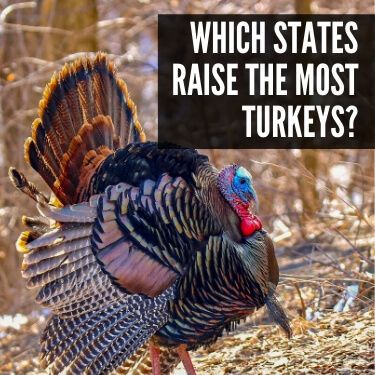
Effective supply chain management of the million frozen turkeys that have to move across the United States for Thanksgiving means that one also has to know where those turkeys are coming from and where they’re going to. Any logistical management system provider must have the resources in the appropriate places to make sure that they’re ready to pick up all those fresh turkeys and get them on the road in time to make it on store shelves across the country.
The United States raises roughly 250 million turkeys each year, and poultry farmers across the nation contribute to this number. Minnesota and North Carolina rule the roost in terms of turkey production, though.
Other states that are major producers of turkeys include Indiana, Arkansas, Missouri and Virginia. Each of these states produces more than 15 million turkeys annually. We handle freight shipping from Virginia to New York , as well as freight shipping from Indiana to New York, and everywhere in between.
As one might expect, the United States is one of the largest consumers of turkey in the world, but believe it or not, this love of the Thanksgiving bird is not relegated to only the holiday season. The average person in the US eats roughly 17.5 pounds of turkey each year, putting them only second in per capita consumption to Israelis, who eat roughly 25.4 pounds of turkey each year. Since 1970, turkey consumption has risen by roughly 110%.
Eight eight percent of all Americans surveyed eat turkey on Thanksgiving. This comes to roughly 46 million turkeys that are eaten each Thanksgiving. Furthermore, 22 million are eaten on Christmas day and a further 19 million turkeys are eaten on Easter.
736 million pounds of turkey were consumed in the United States in 2011, a number that has thought to have only risen further since then. The US eats a lot of turkeys, especially around Thanksgiving. However, a quick look at the math shows that it produces a lot more than it eats. Indeed, the US is also a major exporter of turkey
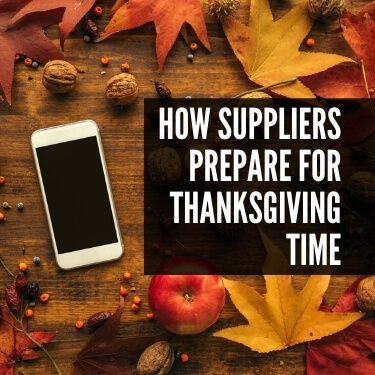
Logistics planning, just like any good Thanksgiving dinner, takes time to prepare. When there’s such a high demand for turkey in stores and on family dinner tables across the country, then it’s essential that turkey suppliers are on time and as promised. The right combination of people, communication, tracking, and top-down management is all needed and a lot of planning in advance is done to make sure that suppliers are fully prepared for the Thanksgiving rush. In fact, you will find that many suppliers take time off leading up to Thanksgiving solely to prepare for the unique challenges that turkey day brings.
So, how do suppliers prepare for Thanksgiving? There are a few ways:
The holiday season is as hectic as it is thriving. As such, it’s important that everyone is aware of expectations and able to forecast what goes where as effectively as possible. Suppliers must know what freight needs will be, and those waiting on that freight must be kept up to date on when they can expect it. Retailers and their transportation partners share a lot of information in advance to confirm capacity and effectively schedule pickups and deliveries.
Suppliers are well aware that deliveries don’t always go smoothly even during the best of times. However, during the holiday shipping season, service failures are even more likely. As such, both suppliers and their customers work around this by allowing for extra time as best as possible to deal with any weather delays, changes to capacity, and other unexpected problems. When it comes to fresh turkey and live turkey transportation, flexibility isn’t easily afforded, which is why it’s important that both suppliers and their customers have their logistics worked out well in advance and have a contingency where possible.
The holiday rush of several million turkeys traveling across the United States can be understandably stressful for those waiting for those turkeys. As such, good suppliers will ensure they make their orders as visible as possible. This way, their clients can know where their orders are, see that they are on track, and plan around them as anticipated. Of course, different suppliers use different visibility tools, so it’s important to choose those who have them at the ready.
Not only is it a matter of time and visibility, but it’s also a matter of wheels on the ground and hands on the wheel. In many cases, suppliers will close or limit operations leading up to the turkey rush of Thanksgiving. There are regulations detailing how much any driver is allowed to drive in a certain period of time, and freeing them up before Thanksgiving means suppliers can have as many people on the road when needed as possible. Furthermore, a lot of prep work goes into ensuring vehicles are operating as efficiently as possible to prevent any unforeseen issues on the road.
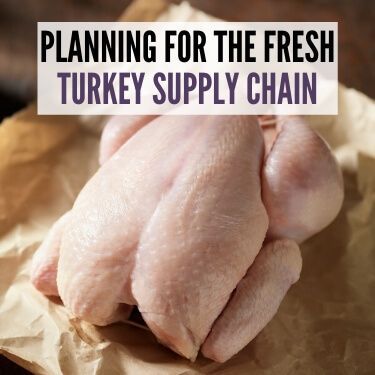
A lot of frozen turkeys are transported for Thanksgiving. Transporting them frozen allows suppliers to be a little more flexible with how they manage their logistics and lowers the chances of loss due to spoilage if unforeseen events hold up the delivery and fulfillment of those turkeys. However, there are plenty of customers willing to spend more on fresh turkeys, and many suppliers and stores who are happy to capitalize on that demand. Yet, this demand comes with extra challenges, challenges that you have to make sure your supply chain is ready to handle.
Roughly 90% of the turkeys consumed in the US are frozen, which means that only 10% are fresh. However, this 10% demands a lot more attention largely due to the fact that they only have a 21-day shelf life. Most fresh turkey needs to be used within 1-2 days of purchase. A level of precision is needed to make sure that turkeys get where they need to go before they are spoiled and cannot be consumed.
As such, supply-demand planning has to be put in place, with accurate forecasts on how many turkeys you need where, and where you’re able to get them. From there, on-time deliveries have to be planned by figuring out how many vehicles with what capacity you need, where you need to be for the pickup and when they have to get on the road. Calculations have to be done to figure out how long it takes shipments of fresh turkeys to be put in stores, as well.
In order to ensure as smooth a transportation of fresh turkeys as possible, retailers, turkeys farmers, distributors, and logistics carriers all have to be in communication with each other. Those transporting and selling need to know when the turkeys are going to be raised and slaughtered by, carriers need to know what capacity to deliver and where, and retailers need to know how much fresh turkey they plan to sell in advance.
Without adequate planning ahead of time, carrying out a successful Turkey supply Chain can very difficult, if not downright impossible. As such, plenty of time should be given in advance of the big migration.
Turkey isn't the only food on the Thanksgiving table with special shipping considerations. See our guide to shipping sweet potatoes.
The needs of a turkey, and how it can survive shipping in a state ready to be sold and consumed according to FDA and SDA regulations changes depending on which types of turkey are being shipped. Frozen, fresh, and live turkeys all have their own needs that need to be considered, and spoilage is a risk with every type of turkey. Shipping them frozen and uncooked is the most reliable option to limit their perishability. Frozen turkeys are usually flash-frozen, which means that cold air is blasted at them to quickly freeze them, preventing the formation of ice crystals that can increase perishability and affect the taste and texture of the meat. However, chest freezers are also often used.
Whether fresh or frozen, perishable foods have to be transported at 40 F or lower in order to prevent the growth of bacteria, so choosing suppliers that have vehicles with cooling capabilities is essential.
You don’t want boxes that are too big when packaging turkeys as it not only wastes space, which is a financial concern. It can also allow the product too much room to move around, which means that it is at a greater risk of being damaged.
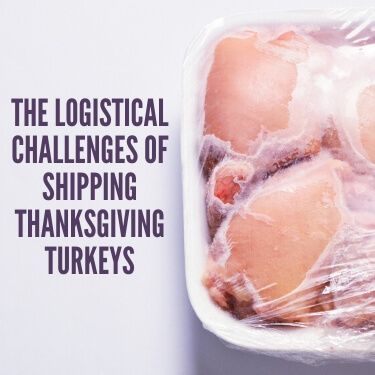
Retailers, farmers, and supply chain service providers must all be aware of the additional challenges that tend to surround the process of shipping turkeys on Thanksgiving. As mentioned, a lot of preparation is required, and much of the preparation is done in order to prevent or mitigate some of those challenges. The product, the sheer demand, and the regulation around how transportation companies can manage their workforce and their resources mean that problems are more common than one might hope.
One such issue is that turkeys are highly perishable and fragile products that have to meet certain federal regulations in order to be sold on the market. As such, extra money must often be spent to ensure that they are transported in a way that helps preserve them as best as possible while protecting their containers from any damage. Live turkeys must be carefully taken to slaughterhouses, then they have to be processed and shipped quickly, while care is taken to ensure their integrity. Both speed and attention to detail are needed to make sure they arrive on time, safe to eat, and with the flavor that retail customers expect.
The holiday season is historically famous for the range of unforeseen effects that can interfere with logical operations, as well as supply and demand problems. For instance, a mass outbreak of the bird flu has decimated the supply of turkeys from farms across the world, and there’s no saying it won’t happen again. Furthermore, catastrophic weather events seem to be becoming more common, and changes to freight routes, such as collisions or jams, are always a threat.
When overseeing the supply or sale of turkey, it’s essential to make sure you work with a logistics company that is fully aware of these challenges and has steps to prevent or mitigate disaster where possible. In cases of the truly unforeseen, the best solution is simply to plan ahead as best as possible and give yourself time to work around any time-wasting issues.
As mentioned, one of the key concerns of retailers, farmers, and supply chain companies is the ability of all involved to ensure that the regulations set by the US Department of Agriculture are complied with as best as possible. These federal regulations are set to ensure that turkeys across the United States comply with a range of rules that are largely designed to protect the health and safety of the people who eat them.
As simple as selling and buying turkey might seem, there are important factors that make it a subject of government regulation, including the following:
Working with farmers, suppliers, retailers, and logistic teams that know these regulations is essential. It doesn’t matter what part of the supply chain fails, those who sell the turkeys are always held responsible if sold turkeys fail to meet USDA regulations.
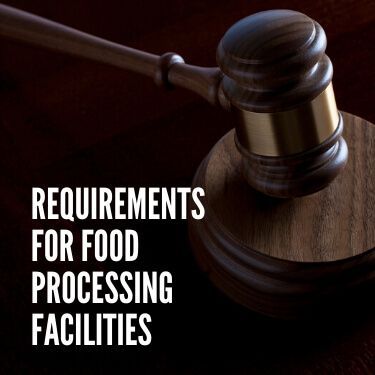
There is a wide range of rules and standards for US food processing firms that have been in place and updated throughout the past few decades. These requirements are ever-evolving, so it’s important to make sure that you are continuously working towards compliance or working with those who make an effort to keep their facility practices up to date as best as possible. Greater detail on any of the requirements mentioned below can be requested from the relevant regulatory bodies.
For instance, the FDA is responsible for enforcing regulations specifying Good Manufacturing Practices for all food processors that fall under their jurisdiction. These are largely split into five different sections, which are as follows:
Aside from the Good Manufacturing Processes listed above, there are also Sanitary Standard Operating Procedures that are enforced by the USDA (or Department of Agriculture.) These rules are applied on top of and alongside the FDA’s regulations but are specific to the meat and poultry industries. Any food processing facility must be in compliance with both sets of regulations.
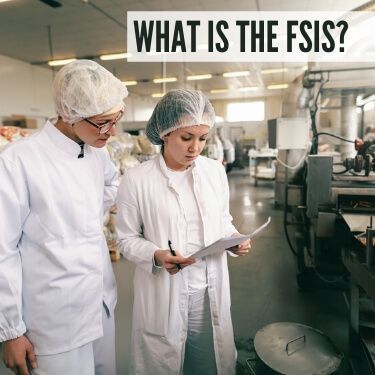
The FSIS is the Food Safety and Inspection Service. They are a federal agency that works as part of the United States Department of Agriculture, headquartered in Maryland. Their role, as their name implies, is to ensure that the country’s commercial supply of agricultural food products is safe, healthy, correctly labeled and packaged, and fully compliant with the USDA regulations.
Everyone involved in the turkey supply chain, from farmers to retailers, have some responsibility in ensuring the health and safety of products that go through the chain. The FSIS carries out microbiological inspections at various levels of the chain to ensure this. For instance, they inspect pre-slaughter animals to ensure their health and prevent the slaughter of diseased animals. They also perform post mortem inspections, oversee freezing and sanitary enforcement, and test samples for levels of antibiotics, pesticides, and any other drugs that are regulated by the FDA and USDA. Lastly, they ensure that accurate labeling and net weighing regulations are followed as well.
Most of the FSIS inspections happen at the farmer level, but retailers should be sure to inquire as to whether or not they have any responsibility for inspection as well.
The HACCP, or Hazard Analysis and Critical Control Points principles are all about preventing hazards by implementing controls to lower risks. Largely, it’s a series of processes for hazard analysis, food safety controls, and recordkeeping. There are seven major HACCP principles, which can help you meet federal and general food safety regulations. However, it’s important to know that the HACCP system was created in order to assist food processing and retail companies with food safety, and they are not to be confused with regulations that you must comply with. FDA and USDA regulations always supersede the HACCP principles.
The HACCP Principles are as follows:
This involves identifying where hazards to food safety are likely to occur and listing steps by which you can check for and investigating any of these hazard sites. The hazards found by the analysis are then prevented, controlled or eliminated by the rest of the HACCP plan.
CCPs are points or procedures during which you can apply controls and prevent, eliminate or reduce food safety hazards. This is effective the moment at which you can intervene, and identifying those points allows you to come up with more effective methods of tacking the crises themselves.
Certain crises will have critical limits, which is the maximum/minimum measurable value at which biological, chemical or physical attributes or parameters can be considered a food safety hazard. For instance, it may be a measure of time, temperature, pH, weight, or something else based on regulatory standards.
This involves setting and describing monitoring procedures for the CCPs determined above to see if foods are at or approaching critical limits. They determine how measurements are taken, when, who is responsible, and how frequently they are taken.
This step involves determining what corrective actions should be used to control, eliminate or prevent food safety hazards if foods reach or are close to critical limits at the CCP in order to prevent hazardous products from entering the food chain.
Processes outside of the initial monitoring must be put in place to verify the results of monitoring and corrective procedures. This effectively means putting together ways of double-checking any results in the HACCP plan.
The process of gathering, recording and storing information that can be used as proof that food is produced safely, according to the demands of the FDA, USDA, and any other regulatory bodies that food producers must report to.
Again the principles listed above are not the same as the regulations that all food suppliers and retailers must follow. However, following those practices can ensure those regulations are observed throughout the production, transportation, and selling process.

Whether for fresh or frozen turkeys, cold-chain logistics are technologies that allow for the safe and time-sensitive transportation needed during the demanding Thanksgiving season. All perishable products are likely to have a need for the cold chain management. There are several different parts of cold-chain logistics, including the following:
We’ve already detailed many of the technologies that are used during cold-chain logistics in the Packaging Turkeys for Shipping section. Be sure to read over it and understand what goes into ensuring your turkeys stay safe and healthy so they're fit to be sold and eaten at the end of their journey.
A practiced refrigeration shipping service from a logistics company will have all the resources and planning ready in advance to meet your cold-chain logistics needs. As such, to make sure you don’t need to spend more on providing supplies for your partners, choose one with the experience you need.
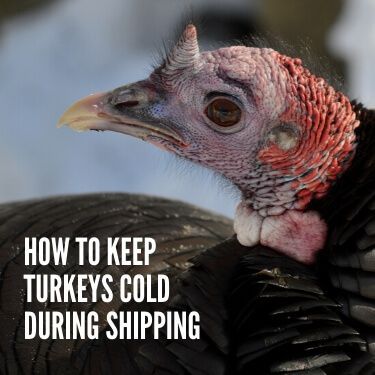
The right packaging supplies are essential, as well. Brand new, unused and undamaged corrugated boxes that are large enough to accommodate the approximate dimensions of the chicken are necessary. If a box is damaged, it can compromise the safety of the product, meaning it may no longer be safe to sell.
You will need supplies in order to keep the temperature of the turkeys down while in transit. Insulated foam containers are often used, which are molded foam bins with tight lids that trap cool air and prevent liquid from leaking in or out. Insulated box liners are often used to seal line the inside of the box instead of foam containers too. Cold packs can prevent thawing or maintain the temperature of cold fresh chicken, but care must be taken to ensure that any cold packs used are non-toxic and sealed in completely food-safe materials.
In order to secure the package, cold temperature tape and water-activated tape can be used, ensuring that their adhesive properties are retained even in lower temperatures. Lastly, it’s important that all goods are labeled properly. During the shipping and handling process, turkeys need to be labeled as Rush so that it’s clear they’re a priority item, Fragile so that they’re handled with care, and Perishable, so that conditions to preserve them are maintained as best as possible.
If your company is going to play a role in the shipping and sale of the several million turkeys that travel throughout the United States this year, then you’re going to need all the help you can get when it comes to supply chain management. As mentioned, there are many challenges to making sure that turkey gets where it needs for Thanksgiving. With the right logistics team, you can make sure that you’re prepared for those challenges.
At R+L Global Logistics, we have the advantage of having helped companies manage their role in the Thanksgiving Turkey Supply Chain with a variety of our freight services, including refrigerated shipping, truckload shipping and expedited freight. This means that we’re aware of the challenges, the needs for a partner who understands the demands of Thanksgiving day, and the regulations for the sale of turkeys that can help you stay compliant with the FDA and USDA regulations. As mentioned throughout this article, preparation in advance is essential when it comes to making sure you have the turkeys you need in the right place, so the sooner you make an inquiry about our services and get your own supply chain ready, the better. We handle everything you need for Thanksgiving, including transporting pumpkins around the country.
Give us a call at (866) 353-7178 or request a freight shipping quote online!
Minnesota and North Carolina rule the roost in terms of turkey production.
Minnesota produces more than 40 million turkeys a year.
North Carolina produces more than 30 million turkeys a year
Other states that are major producers of turkeys include Indiana, Arkansas, Missouri and Virginia.
The right packaging supplies are essential. Brand new, unused and undamaged corrugated boxes that are large enough to accommodate the approximate dimensions of the chicken are necessary. If a box is damaged, it can compromise the safety of the product, meaning it may no longer be safe to sell.
All perishable products are likely to have a need for the cold chain management. There are several different parts of cold-chain logistics, including the following:
Ensuring there are cold storage facilities to keep goods and products that are to be transporting.
Providing cooling systems that can manage the temperature of foods during the supply chain, from processing to transporting.
Cold transport that keeps foods at both stable temperature and humidity levels throughout their journey.
R+L Global Logistics
315 NE 14th St., Ocala, FL 34470